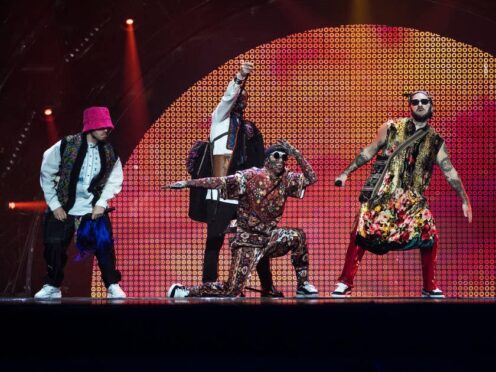The organiser of Eurovision said the “severe” risk of air raids in Ukraine alongside the “high” risk of mass casualties contributed to the decision that the “necessary requirements for hosting” the song contest were not met.
The Ukrainian entry of Kalush Orchestra won the competition in Turin, Italy this year and it is traditional that the winning country hosts the event the following year.
However, the European Broadcasting Union (EBU) announced that following a “full assessment and feasibility study” it had concluded the “security and operational guarantees” required to host the event cannot be fulfilled by Ukraine’s public broadcaster UA:PBC.
The @EBU_HQ has issued the statement below regarding the hosting of next year’s #Eurovision Song Contest.
Find it online here ➡️ https://t.co/M6qnJ33obw pic.twitter.com/7rcRkEfF7M
— Eurovision Song Contest (@Eurovision) June 23, 2022
On Thursday, the EBU said it “fully understands the disappointment” but the decision was “guided” by their responsibility to ensure the safety and security or everyone working and participating in the event – “the planning of which needs to begin immediately in the host country,” a statement said.
“At least 10,000 people are usually accredited to work on, or at, the Eurovision Song Contest including crew, staff and journalists.
“A further 30,000 fans are expected to travel to the event from across the world.
“Their welfare is our prime concern.
“It is therefore critical that decisions made in relation to such a complex live television event are made by broadcasting professionals and do not become politicised.
“The Rules of the Eurovision Song Contest, that all participating broadcasters agree upon, clearly state that the event can be moved in a force majeure situation such as an ongoing war.”
🇺🇦 Kalush Orchestra @shangrila
The Ukrainian Eurovision winners will play their first ever UK show at Truth Stage on Friday night. pic.twitter.com/07Anheufl2
— Glastonbury Festival (@glastonbury) June 21, 2022
The EBU said that Ukraine’s response to a security questionnaire highlighted a number of risks that would impact the immediate planning of Eurovision, including the “severe” risk of air raids and attacks by aircraft, drones and missiles.
In addition, the EBU said they ordered third-party security advice which found counter-measures to reduce the threats in Ukraine were “insufficient” and the risk rating of a mass casualty event due to the ongoing conflict was “high.”
The statement continued: “Alongside the security concerns, the continued conflict in Ukraine makes delegations and participants reluctant to travel to the country.
“We also noted the comments made by the Nato Secretary General, Jens Stoltenberg, that the war in Ukraine ‘could take years.’
“With regards to the possibility of hosting the Contest in a border location close to a neighbouring country, the specifications of suggested venues, and the lack of the necessary surrounding infrastructure, do not meet the requirements of the ESC.
“When drawing its conclusions, the EBU also took note that, based on our current information, no major international concert tours are visiting Ukraine throughout 2023.
“All this contributes to the EBU’s overall assessment that in terms of security and operational guarantees, the necessary requirements for hosting, as set out in the Rules of the Eurovision Song Contest are not met.”
The EBU concluded that the decision was made to move the event to another country, confirming that discussions were ongoing to find a “suitable location” for next year’s contest.
